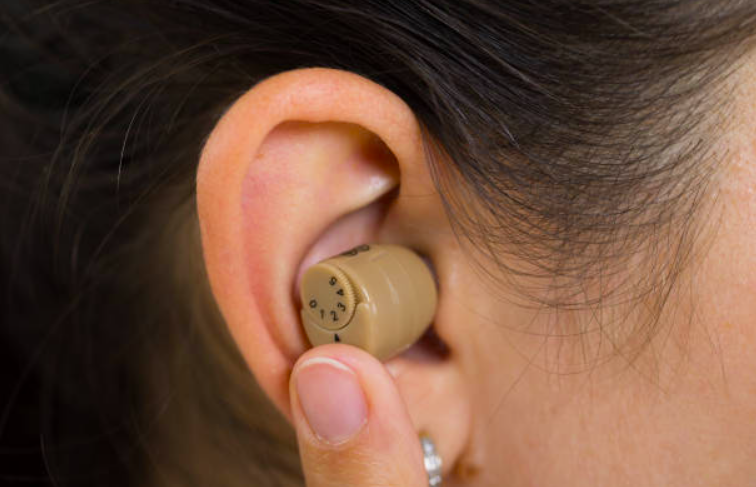The Future of Over-the-Counter Hearing Aids: Trends and Predictions

Hearing aid technology has advanced in the last decade. A new government rule requiring the introduction of an over-the-counter hearing aid category would further merge hearing aids with consumer electronics. Meanwhile, hearing science is changing who requires aid.
This session will discuss the future of over-the-counter-hearing aids, and it’s trends. It will also predict the technical and psycho-acoustical barriers to these new technologies meeting the demands of present hearing aid users, this rising section of the hearing impaired, and hearing health service changes.
Over-The-Counter Hearing Aids Market Growth & Trends
By 2030, it is anticipated that the worldwide Over-the-Counter hearing aids industry will be worth USD 1.7 billion. The market is predicted to expand at a CAGR of 5.7% from 2023 to 2030. The market is projected to grow as a result of the market’s accessibility to cutting-edge technologies and the growing incidence of mild to moderate hearing loss among people worldwide.
The rising incidence of this condition in the populace is blamed for the market’s expansion. More than 37.5 million Americans, who are likely to fuel demand for these devices, have some difficulty hearing, according to a National Institute on Deafness and Other Communication Disorders article from March 2021.
Furthermore, since the incidence of the ailment rises with ageing, the growing geriatric population base throughout the world is anticipated to further fuel demand for the devices.
During the projected period, the demand for the devices is likely to be driven even more by government programs. It is good for people to raise their knowledge about the devices. In October 2021, FDA officially cleared a new type of hearing aid that can be bought over the counter (OTC) for people with low to severe hearing loss.
Thanks to this legislation, customers will no longer need to provide prescriptions when purchasing these gadgets. It is also anticipated that the legislation will lower the cost of devices.
The FDA has created rules and standards for manufacturers. And it is up to these organizations to ensure that the products they produce are effective and safe for persons with the disease.
The producers must also establish requirements for the packaging. They must include the advantages of the devices. The patients may benefit from them. Consumers should be aware of the cautions and details before purchasing these devices.
The industry will also develop due to important companies’ alliances and other activities. Innovative items from many companies joined the new device area.
Lucid Hearing debuted a variety of over-the-counter OTC hearing aids in October 2022. It offers different models, fittings, and battery choices for different prices.
What is the Over-the-Counter (OTC) Hearing Aid Market Share?
Over-the-Counter (OTC) Hearing Aid Market Share by Company Type Report covers the market’s qualitative and quantitative characteristics. It is shown for each area and country. This report also provides a balanced and detailed analysis of current Over-the-Counter (OTC) Hearing Aid trends.
And it also shows the opportunities/high growth areas. So that the market drivers help investors devise and align their market strategies to current and future market dynamics.
The Global Over-the-Counter (OTC) Hearing Aid Market Share research covers global markets. It also analyses development trends, competitive landscape analysis, and major regions. Manufacturing, cost, and development policies are examined. This report includes import/export consumption. It also includes supply and demand, cost, price, income, and gross margins.
Over-The-Counter Hearing Aids Market Report Highlights
With a market share of 33.0% in 2022, the canal hearing aids sector led the industry. Invisible design and improved performance, among other things, helped the category flourish.
In 2022, 92.1% of the market comprised digital technology. This was because more money was spent on research and development. The sound was amplified better in difficult conditions, with more program choices. It made the device work better.
With a 35.2% share of the regional segment in 2022, North America was the leader in the segment. Some of the things that are making the market growth are the government’s efforts. It helps to raise knowledge about hearing problems. And it also shows the fact that people have more money to spend.
What are over-the-counter (OTC) hearing aids?
FDA-approved OTC hearing aids cure mild to moderate hearing loss in persons over 18. They are regulated independently from prescription hearing aids for safety and effectiveness.
OTC hearing aids pros and cons
OTC hearing devices have certain limitations compared, but they may be an excellent option for many individuals with hearing loss. Let’s examine the benefits and drawbacks so you can decide which kind of hearing aid is best for you.
Pros
- lower average price compared to hearing aids on prescription
- Some brands, like Lively, let an audiologist do online tests and changes.
- Many come with a smartphone app that lets you change the settings and brightness.
Cons
- Not made to treat hearing loss that is more severe or caused by an accident or a medical condition.
- They are self-fitting, which means they can’t be made to fit your ears just right.
- Usually have fewer features than hearing aids that need a prescription.
- No hearing care was given in person after the sale.
- Most over-the-counter hearing aids have shorter guarantees than hearing aids that you get from a doctor.
Who are OTC hearing aids for?
OTC hearing aids are designed for adults 18 and older with mild to moderate hearing loss. If a person has to speak loudly even in calm places or has trouble hearing in busy areas, their hearing loss is likely too severe for OTC hearing aids.
Where to buy OTC hearing aids
Eargo, Jabra Enhance, and Lexie sell DTC hearing aids online. Direct-to-consumer hearing aids are sold without a hearing clinic. DTC hearing aids bridged the FDA’s 2016 statement that it will develop a category of OTC hearing aids and its August 2022 regulation.
On October 17, 2022, you may purchase OTC hearing aids online and at healthcare retailers, including Best Purchases, Walgreens, CVS, and Costco.
How much does an OTC hearing aid cost?
Prescription hearing aids average $4,600, while OTC ones cost far less.10 OTC hearing aids saved Americans $3,000 in August 2022, according to the federal government.11 OTC hearing aids cost $1,600 on average. The finest OTC hearing aids cost $906–$1,598 in 2023, which is close.
The Audien Atom hearing aids cost $99 per pair, while the MDHearing Air, Volt, and Neo hearing aids start at $299.
Conclusion
Over-the-Counter hearing aids provide several advantages to consumers. It particularly helps those who have age-related hearing loss. The little research on OTC hearing aids highlights the need for further data. We present numerous insights about the OTC hearing aids market share.
Over-the-Counter hearing aid makers need high-quality, independent research to support regulatory clearance. PPI or CCI should also be considered while setting future research priorities.







